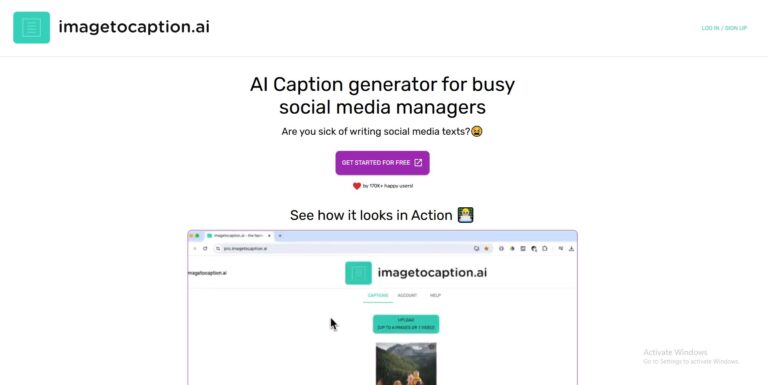In today’s digital world, where information is readily available in large quantities, pinpointing trustworthy and easy-to-understand information can itself pose as a challenge. For students searching for academic material, journalists on the lookout for factually correct news pieces, marketers looking to gather data, or for anyone wanting to learn more modern search engines are not helpful. This is where Perplexity AI steps in. The company uses advanced language models alongside browsing the web in real-time to implement a better way of working with information. Instead of scrolling through endless webpages, users are provided with an AI-generated and cited answer, more akin to a conversation answer than a search.
With this in mind, let us explore the reasons that make Perplexity AI stand out from the rest and serve modern knowledge seekers.
What is Perplexity AI?
Perplexity AI is an AI-driven search assistant that operates on a chatbox and provides accurate answers with proofs and references. It offers answers in a chat format. Perplexity AI is built on top of large language models (LLMs), such as OpenAI’s GPT-4, and has the ability to search the internet to get the most recent information. It uses a hybrid model of ChatGPT and Google Search, leveraging the strengths of the two.
The Perplexity AI algorithm generates conversational text from real-time and curative data. This process has two distinct advantages. ChatGPT works best at producing elaborate and coherent text, but has issues accessing real-time information unless it is browsing. Fantastic for real time information, Google is still rigid in its functionality as it requires users to navigate through several links and ads.
AI Perplexities Key Features
1. Real Time Web Search
Perplexity illuminates the working the web without any time constraints. Because of that, it is able to:
1. Distribute up to date news on the topics scanned.
2. Gather data from reputable websites such as Wikipedia, Git Hub, the New York times and even academic journals.
3. Continuously monitors the world of technology, political events and even scientific discoveries.
Take for instance the question, “What’s the latest update on the Mars mission?”. Perplexity would retrieve relevant real-time news sources and provide a summary in a matter of seconds. Traditional models of AI have a difficult to this problem on their own.
2. Multi-Turn Contextual Dialogue Systems
Contrary to traditional search engines, Perplexity allows conversational interactions. You can begin with a high-level question such as “What is quantum computing”, and then follow up with, “What are the main hurdles in constructing quantum computers?”
Perplexity remembers prior queries, allowing for additional refinement and context deepening exploration.
3. Clickable Cited References
Every remark is reinforced by clickable citations that can be traced to trustworthy references. This aids in:
1. Fact verification.
2. Misinformation mitigation.
3. Providing supplementary literature.
4. Ensuring AI responsed transparency.
This is important for scholarly and journalistic undertakings where documentation is crucial.
4. Advanced Model Capabilities with Pro Access
The Perplexity Pro plan unlocks advanced AI models like GPT-4 and Claude 3, which offer:
1. Higher-level response nuance and accuracy.
2. Increased comprehension and understanding of language.
3. Augmented summarization skills.
4. Superiority in complex tasks like programming, calculations, and multi-language translation.
Model shifting is also available for pro users, enabling selection of preferred AI engines based on task requirements.
5. Uploading Files and Focus Mode
Perplexity Pro introduces Uploader and Focus Mode features, including:
Focus mode that lets users determine which source to extract answers from, including academic texts, YouTube, Reddit, and more.
Upload Files: This feature enables users to upload documents, including PDFs, research papers, and reports, and pose questions pertaining to the documents.
This transforms Perplexity into a potent research assistant that transcends merely responding to general knowledge inquiries.
6. Tracking and Privacy of Users
Privacy is a growing concern when it comes to the internet. Everyone has experienced how big technology companies track users, profile them, and use that information to generate revenue. Perplexity does the following instead:
1. For basic functionality, it does not require sign-up.
2. Data collection and tracking are minimized.
3. There is greater transparency regarding the sourcing and displaying of content.
For those in need of services without revealing their identity, Perplexity outperforms traditional search engines.
Advantages of Using Perplexity AI
Fast and Accurate: Because of the integration of AI, Perplexity provides answers in record time and of great accuracy as data is factored in.
1. Claims are Accompanied with Cited Sources: Usability for academic work is sharpened because trustworthiness is strengthened.
2. Intuitive Chat Styled Interface: It makes the experience more pleasant as less robotic and transactional.
3. No Ads or SEO Clutter: Offers distraction free content devoid of intrusive advertisements.
4. Broad Coverage of Topics: Perplexity’s capabilities span numerous subjects including but not limited to technology, science, law and philosophy making it a great resource for deep researchers.
5. Lightweight and Fast: The mobile and desktop versions both operate seamlessly and efficiently.
Cons of Perplexity AI
1. Restricted No-Cost Usage: Higher-tier models like GPT-4 and Claude 3 are available on a subscription basis.
2. Intermittent Inaccuracy: As with any LLM, it will, from time to time, provide incorrect or slanted content.
3. Subject to Source Limitations: The provided answer may be flawed in the case of weak or biased web sources.
4. No Multimedia Answer Support: It does not currently allow image, video, or map support for searches, unlike Google.
5. Learning Curve For More Sophisticated Inquiries: A casual user might consider it overly complex for basic queries such as, “weather today.”
Who is Perplexity AI For?
Perplexity AI is highly adaptable and can prove useful for a wide array of both casual and professional users:
Students and Researchers
1. Summarize academic papers
2. Identify cited and incorporated sources that are recent
3. Simplify understanding of complex theories
Writers and Content Creators
1. Generate content ideas
2. Draft outlines or full-length articles and blogs
3. Identify current trends
Professionals and Executives
1. Conduct analysis on markets and competition
2. Keep abreast of industry news
3. With the help of data, make rational decisions
Developers and Tech Enthusiasts
1. Receive assistance in writing code with examples
2. Debug frequent programming issues
3. Learn new technology stacks with ease
The Inquisitive Learner
1. Ask questions that are philosophical in nature
2. Encounter new and unfamiliar topics
3. Pick up languages or learn historical facts
The Final Word: Is Perplexcity AI Worth It?
Perplexity AI is not merely a tool; rather, it is a thoughtful guide in our current world filled with information. Unlike other traditional search engines, AI Perplexity features a chat-like user interface and conversational tone enabling real-time interaction with online information retrieval systems along with answer citation.
Perplexity saves time while adding clarity to your work, whether it be your marketing content or a thesis. It stands out from the crowd for its privacy-first approach within an ad-tracking, user-dominated ecosystem.
Knowledge-intensive users, in spite of a few drawbacks—like some inaccuracies and limited access without a Pro account—value the service greatly.
Overall, Perplexity AI is certainly worth trying, and most likely worth upgrading to Pro, especially if you regularly look for summaries, explanations, or insights online.




